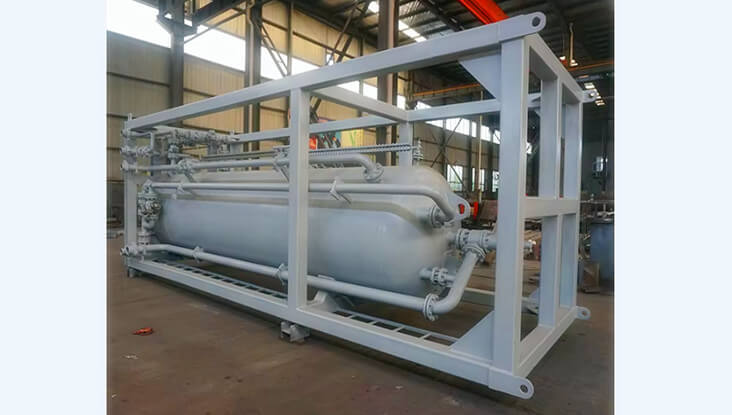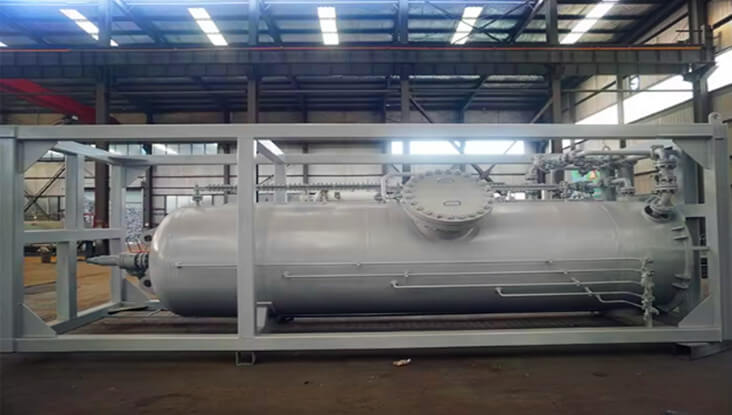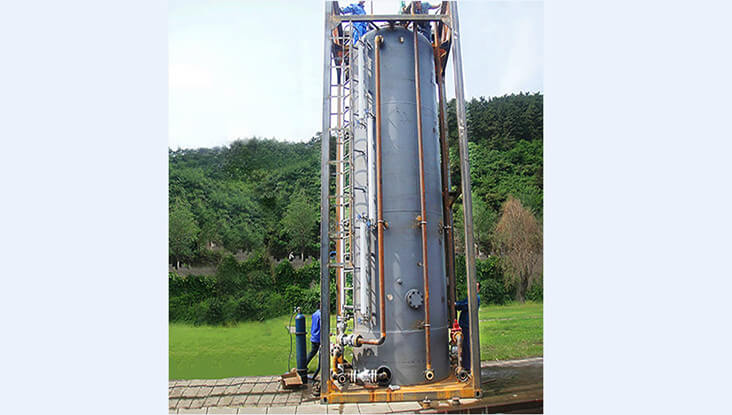Analysis of the Main Causes for Gas-Liquid Separation Surge Tanks Failing to Retain Liquid
As a global leader in petrochemical equipment manufacturing, HC leverages extensive project experience and professional expertise to provide efficient and reliable petrochemical equipment solutions to its customers. Today, we will explore the main reasons why gas-liquid separation surge tanks may fail to retain liquid during operation.
1. Faulty Liquid Level Controller
Gas-liquid separation surge tanks are typically equipped with liquid level controllers or sensors to monitor and control liquid storage. If these devices malfunction or are improperly set, the tank may fail to accumulate liquid or may discharge excess liquid. Regular inspection of the liquid level sensor and control system to ensure accurate measurements is key to preventing this issue.

2. Issues with the Drain Valve
The drain valve is a critical component of the gas-liquid separation surge tank. If the valve is not properly sealed or is faulty, liquid may continuously drain out, preventing accumulation in the tank. Regular maintenance and checks for leaks or damage in the drain valve are essential steps to ensure the tank functions correctly.
3. Poor Gas-Liquid Separation Efficiency
The core function of the surge tank is to separate gas from liquid. If the gas-liquid separator is poorly designed, or if internal separation components are damaged or clogged, separation efficiency can be compromised, preventing liquid from settling in the tank. In such cases, it's crucial to inspect the separator’s performance and ensure it is effectively separating gas from liquid.
4. Insufficient Liquid Inflow
In some situations, the volume of liquid entering the surge tank may be insufficient, preventing the liquid level from accumulating. This may be due to upstream separation equipment failing to effectively separate the liquid, or due to blockages. Inspecting upstream equipment and confirming normal liquid flow is the first step to resolving this issue.
5. Gas Carrying Excess Liquid
When the gas flow rate is too high, it can carry some liquid along with it, causing the liquid to bypass the surge tank and preventing it from accumulating. To avoid this, the gas-liquid separation efficiency should be optimized, and the gas flow rate adjusted to ensure proper liquid separation.

6. Abnormal System Pressure
Gas-liquid separation surge tanks rely on the correct system pressure differential for effective gas-liquid separation. If the system pressure is too low or fluctuates frequently, it can negatively impact separation efficiency, preventing liquid storage in the tank. Monitoring and maintaining stable system pressure is an important measure to resolve such problems.
7. Improper Operation
In addition to equipment-related issues, operational factors must also be considered. Improper control of liquid inflow or excessive gas carrying liquid can significantly affect the separation process. For instance, if operators allow too much gas to carry liquid into the surge tank, or if the inflow rate of liquid is not properly managed, it will lead to poor separation efficiency. Therefore, it is essential to ensure that operational parameters are closely monitored and adjusted according to the system’s requirements.

The issue of gas-liquid separation surge tanks failing to retain liquid can stem from various factors, including equipment design, control systems, operational parameters, and even human error. Based on years of project experience and technical expertise, HC recommends conducting thorough inspections and maintenance when encountering such issues, ensuring that all components are functioning correctly and that operational practices are optimized to maintain the stability and performance of the surge tank.
HC is dedicated to providing efficient and safe petrochemical equipment solutions to clients worldwide. We not only deliver high-quality equipment but also offer comprehensive after-sales services to ensure the long-term stable operation of our products. If you encounter any issues with your gas-liquid separation surge tanks, feel free to contact us, and we will gladly provide professional support.
